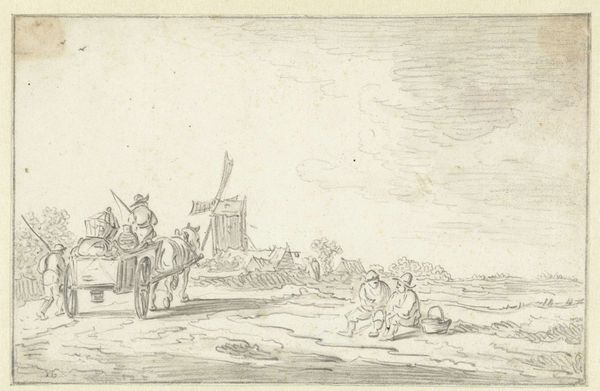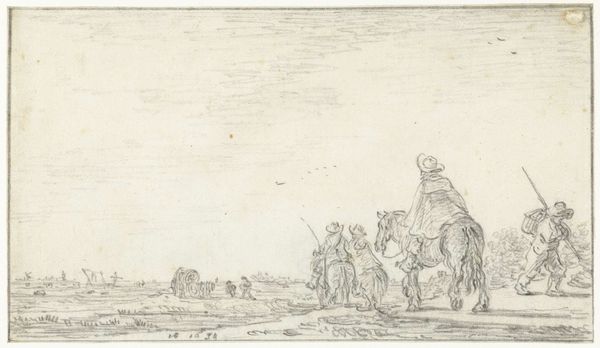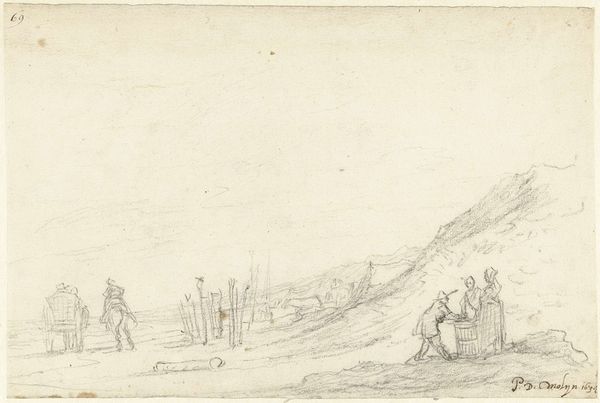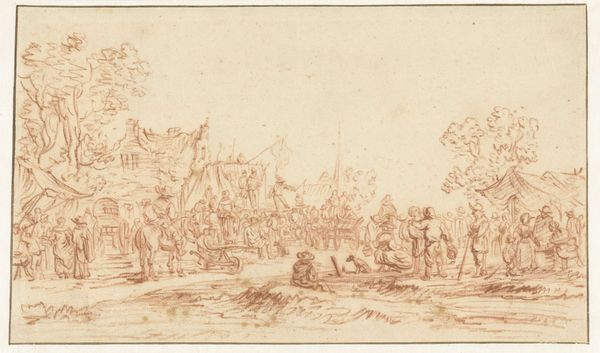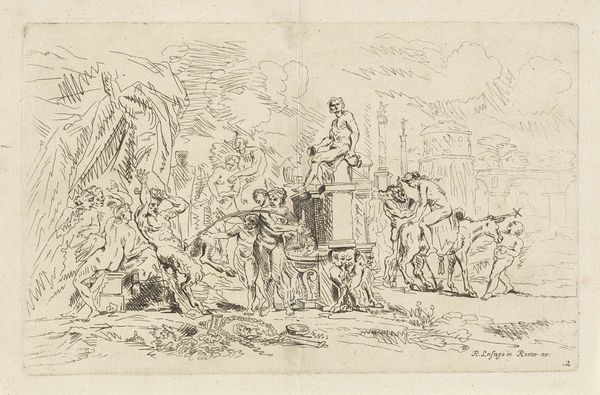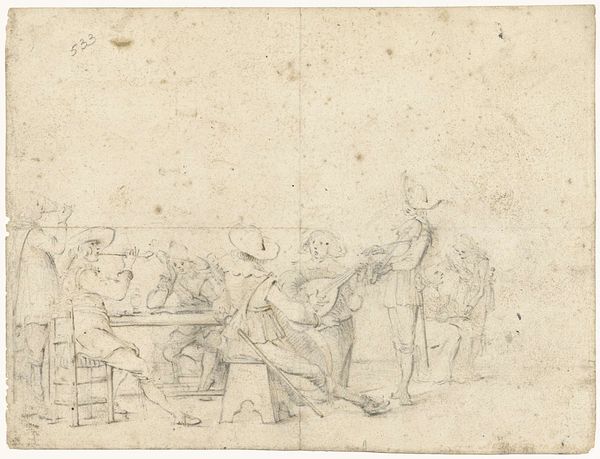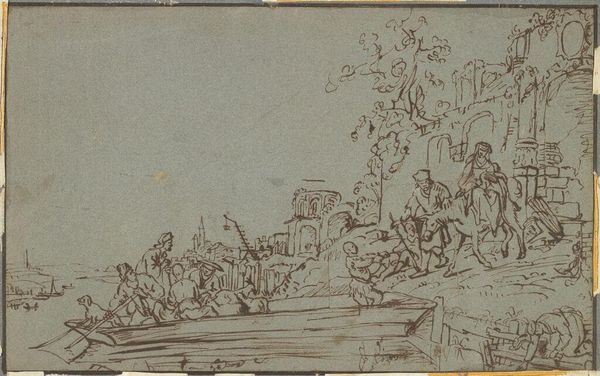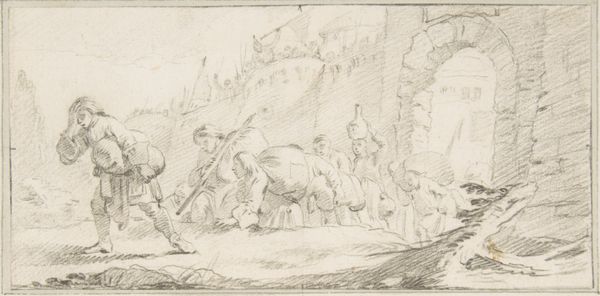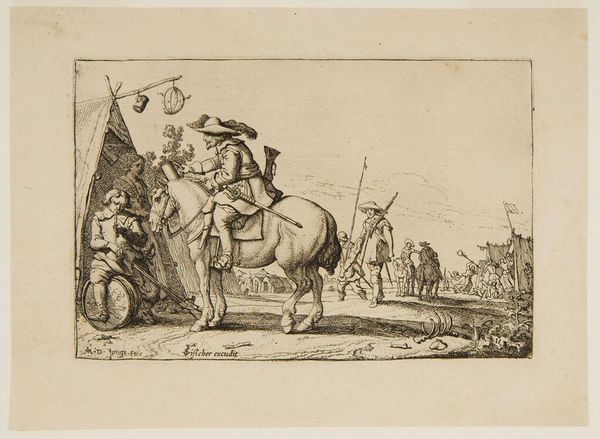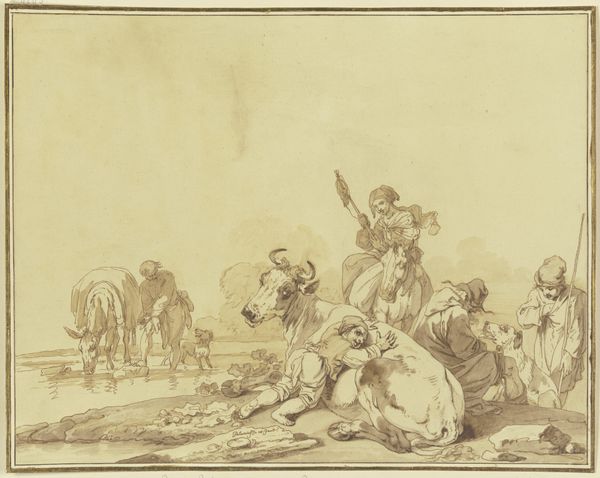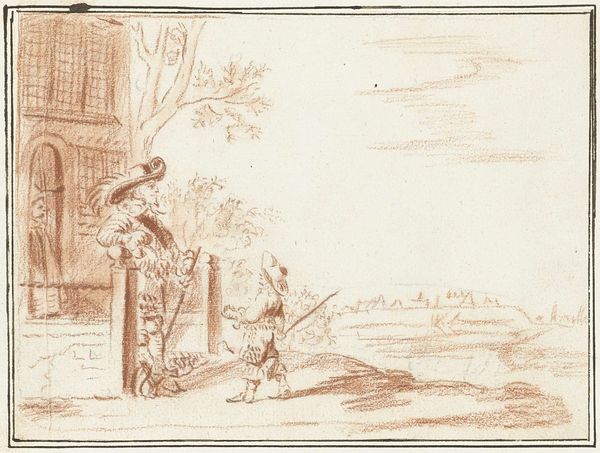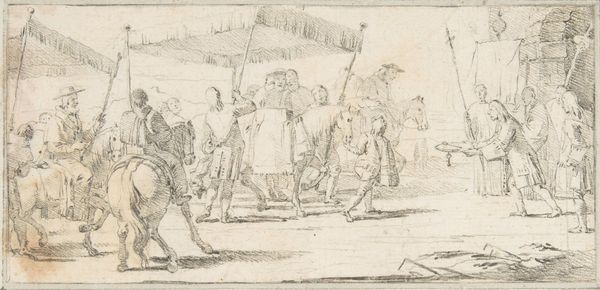
drawing, ink, pen
#
drawing
#
narrative-art
#
dutch-golden-age
#
pen sketch
#
landscape
#
ink
#
pen
#
genre-painting
Dimensions: height 210 mm, width 325 mm
Copyright: Rijks Museum: Open Domain
Gesina ter Borch rendered this ink drawing of a soldier on a country road with gallows in the 17th century. The most striking feature of the landscape is the gallows, a potent symbol of justice, state power, and, of course, death. The symbol of the gallows transcends mere depiction; it evolves into a cultural hieroglyph representing the harsh realities of societal control and the fragility of life. Consider, for instance, the recurrence of the gallows in Francisco Goya's "The Disasters of War," where its presence underscores the brutal consequences of conflict and the breakdown of social order. The wheel, often associated with torture and execution, evokes strong psychological responses, such as fear, dread, and unease. Such symbols serve as potent reminders of society's darker aspects. The gallows invites reflection on humanity’s capacity for both justice and cruelty.
Comments
No comments
Be the first to comment and join the conversation on the ultimate creative platform.
